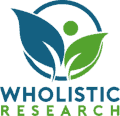Why Do Stimulants Calm ADHD? (Explained)

Why do stimulants calm ADHD?
Attention deficit hyperactivity disorder (ADHD) can greatly affect an individual’s daily life, making it difficult to concentrate, stay organized, and control impulsive behaviors.
One common treatment option for ADHD is stimulant medications, but have you ever wondered why these medications, typically known for their stimulating effects, actually have a calming effect on individuals with ADHD?
In this article, we will explore the intriguing science behind why stimulants have a calming effect on ADHD symptoms.
By understanding the mechanisms at play, we can gain valuable insights into how these medications work and their potential benefits in managing ADHD.
Understanding ADHD and Its Symptoms
Attention Deficit Hyperactivity Disorder (ADHD) is a neurodevelopmental disorder that affects both children and adults.
It is characterized by a persistent pattern of inattention, impulsivity, and hyperactivity that can significantly impact daily life.
Individuals with ADHD often struggle with setting limits on their behavior, such as compulsive eating, due to difficulties in self-regulation.
ADHD can lead to lower dopamine levels in the brain’s pleasure center, affecting overall levels of satisfaction and pleasure.
Living with ADHD can be challenging and often feels like a constant balancing act. Adults with ADHD may frequently experience lateness, disorganization, forgetfulness, and feeling overwhelmed by responsibilities. This can impact various areas of life, including career, relationships, and personal well-being.
Career-wise, ADHD can make it difficult to comply with corporate rules, meet deadlines, and follow a 9-to-5 routine. Financial management may also pose a challenge, with impulsive spending leading to lost paperwork, late fees, and debt.
In addition to these practical difficulties, ADHD symptoms can contribute to a range of health problems. Compulsive eating, substance misuse, anxiety, chronic stress, and low self-esteem are common issues associated with ADHD.
Neglecting important check-ups, skipping doctor appointments, ignoring medical instructions, and forgetting to take vital medications can further exacerbate health concerns.
While the symptoms may vary, there are several common signs of ADHD in adults to watch out for.
Let’s explore 6 of the most prevalent symptoms of ADHD:
- Inattention: People with ADHD often find it challenging to concentrate and pay attention to details. They may frequently make careless errors, struggle to complete tasks, and have difficulty organizing their thoughts or staying focused for extended periods.
- Hyperactivity: Hyperactivity is another key symptom of ADHD in adults. Individuals may have an excess of energy, constantly feel the need to be on the move, and find it difficult to sit still or stay calm in quiet situations.
- Impulsivity: Adults with ADHD may exhibit impulsive behavior, blurting out responses without thinking, interrupting others during conversations, and having a tendency to act without considering the consequences. They may also struggle with impulse control, leading to difficulties in managing their emotions effectively.
- Mood Swings: Irritability, mood swings, and a quick temper are commonly observed in adults with ADHD. They may experience frequent changes in emotions, often feeling frustrated, angry, or overwhelmed by even minor setbacks or challenges.
- Risky Behavior: ADHD can lead to engaging in risky activities without proper consideration for personal safety or the safety of others. This might include reckless driving habits, excessive gambling, substance abuse, or a disregard for potential dangers associated with certain activities.
- Associated Conditions: ADHD in adults can often coincide with other related conditions, such as Oppositional Defiant Disorder (ODD), Conduct Disorder, sleep problems, Autism Spectrum Disorder (ASD), epilepsy, or specific learning disabilities. These conditions can further complicate diagnosis and treatment.
The Role of Stimulants in Treating ADHD
While the exact cause of ADHD is not fully understood, it is believed that imbalances in certain neurotransmitters in the brain play a role.
Stimulant medications have long been the go-to treatment for managing ADHD symptoms.(1)
Stimulants are a class of medications commonly used in the treatment of ADHD. They work by stimulating certain areas of the brain and increasing the levels of specific neurotransmitters, such as dopamine and norepinephrine.
One of the most commonly used treatments for ADHD is Adderall.
But, how does it work?
Let’s delve into the role of stimulants in treating ADHD and explore how they treat ADHD:
- The mechanism of action: Stimulants primarily target the prefrontal cortex, a brain region responsible for executive functions such as attention, impulse control, and behavioral regulation. They work by increasing the release and blocking the reuptake of dopamine and norepinephrine, two important neurotransmitters involved in regulating these functions.
- Increasing neurotransmitter levels: Both dopamine and norepinephrine play crucial roles in modulating brain chemistry. Dopamine helps regulate motivation, attention, and reward pathways, while norepinephrine is responsible for maintaining alertness and focus. By increasing the levels of these neurotransmitters, stimulants (like Adderall) help improve attention span, reduce hyperactivity, and decrease impulsive behavior.
- Balancing brain chemistry: In individuals with ADHD, there is evidence of lower levels of dopamine and norepinephrine in certain areas of the brain. Stimulants help restore the balance by enhancing the availability of these neurotransmitters. This balance is crucial for maintaining optimal brain function and improving ADHD symptoms.
- Long-acting and short-acting stimulants: Stimulants can be classified into two categories: long-acting and short-acting. Long-acting stimulants, such as extended-release formulations, provide a sustained release of medication throughout the day, offering coverage for school or work hours with fewer side effects. On the other hand, short-acting stimulants provide a quicker onset of action but require more frequent doses.
- Effectiveness and side effects: Stimulants have demonstrated a remarkable effectiveness in managing ADHD symptoms, with around 70-80% of individuals experiencing significant improvement. However, as with any medication, there are potential side effects to consider. These may include decreased appetite, trouble sleeping, increased heart rate, and irritability. It is important to closely monitor individuals on stimulant medication to ensure the benefits outweigh any side effects.
Overall, stimulant medications like Adderall play a crucial role in the treatment of ADHD by increasing the levels of neurotransmitters like dopamine and norepinephrine in the brain.(2)
This leads to a calming effect that allows individuals with ADHD to experience the cognitive benefits of an improved attention span.
Why Stimulants Calm ADHD Symptoms
Contrary to what was previously believed, recent studies reveal that stimulants have a paradoxical calming effect on individuals with ADHD. While stimulants are typically associated with increased activity, in the case of ADHD, they actually help improve executive function and focus attention.
This paradoxical effect is dose-related, meaning that low doses of stimulants can enhance brain activity and improve symptoms of ADHD. Stimulants stimulate the whole brain, regardless of whether the individual has ADHD or not.
This phenomenon was once considered a diagnostic test, as individuals with ADHD would experience a calming effect when prescribed stimulant medication.(2)
It may seem counterintuitive to prescribe stimulants to someone who is already overstimulated, but in reality, these medications have been found to bring about a calmer and more focused state for individuals with ADHD.
Additionally, this is why natural nootropics for ADHD, and nootropic stacks that combine caffeine pills and L-Theanine supplements, are beneficial for those wanting to manage the symptoms of ADHD.
Overall, the paradoxical effect of stimulants highlights the complex interactions between brain chemistry and medication response in individuals with ADHD.
Conclusion
It is evident from the factual data that stimulants have a paradoxical effect on ADHD symptoms. By increasing the levels of dopamine and norepinephrine, stimulants actually calm ADHD.
This makes stimulant medication an excellent option for those with ADHD.
However, for those who prefer a more natural approach or are looking for additional stimulant support, nootropics, and nootropic stacks (such as Caffeine and L-Theanine) are also popular choices!
These combinations can be used alongside medication to further enhance cognitive function and manage ADHD symptoms.
Remember, as always, it’s important to consult with a healthcare professional to determine the best course of treatment for your specific needs.
- Arnsten, Amy F T. “Stimulants: Therapeutic actions in ADHD.” Neuropsychopharmacology : official publication of the American College of Neuropsychopharmacology vol. 31,11 (2006): 2376-83. doi:10.1038/sj.npp.1301164 ↩
- Harris, Sharonda S et al. “A role for cortical dopamine in the paradoxical calming effects of psychostimulants.” Scientific reports vol. 12,1 3129. 24 Feb. 2022, doi:10.1038/s41598-022-07029-2 ↩ ↩
